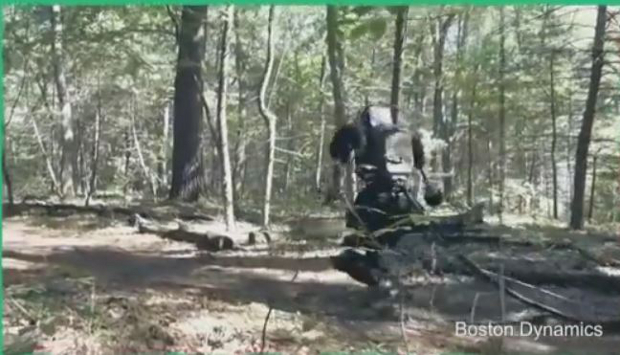While handlers are holding the robot’s power tether in the video, Raibert said Boston Dynamics is working with an upgraded version of Atlas that doesn’t require a tether.
“We’re making pretty good progress so it has mobility that’s sort of within shooting range of yours,” Raibert said in the video, adding that his goal is to build robots that can match or surpass human functionality.
Boston Dynamics is experimenting with 3D-printed parts, such as valves for hydraulic fluid, as well as shell and lattice structures for robot legs to make them stronger and lighter, Raibert said.
Sponsored by the Defense Advanced Research Projects Agency (DARPA), Atlas was upgraded earlier this year with lighter materials, improved actuators to help it get up after falls and repositioned arms so that it can see its hands in motion.
Meanwhile, its wrists can rotate by themselves, allowing it to turn doorknobs without having to use its whole arm. The other major improvement is a variable-pressure pump that helps with energy conservation and makes the robot quieter.
It can also operate without its power tether.
Atlas was the basis of some of the robot platforms used in this year’s DARPA Robotics Challenge, inspired by the 2011 disaster at Japan’s Fukushima Dai-Ichi nuclear power plant. The competition, designed to get a humanoid robot to complete several disaster-related scenarios, was won by a team from the Korea Advanced Institute of Science and Technology (KAIST).
IDG News Service








Subscribers 0
Fans 0
Followers 0
Followers